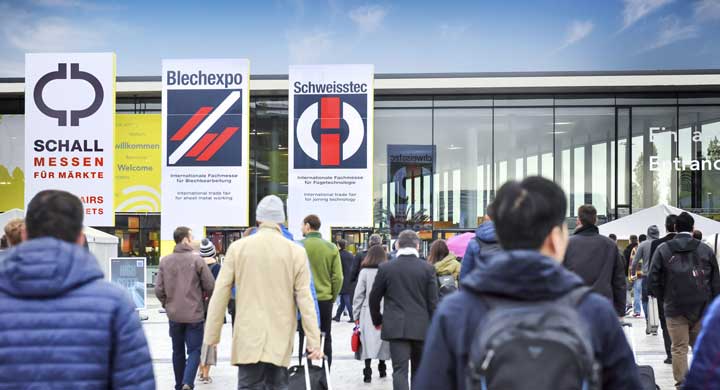Trade fair highlight 19. July 2023
Nitrogen systems in perfection ‒ manifold plates from STEINEL
1 / 4

Manifold plate as the tool upper part in a progressive stamping tool with a modular design.
2 / 4

Interior of a manifold plate with three independent pressure circuits.
3 / 4

Manifold plate with three pressure circuits that can be set independently of each other.
4 / 4

By loading the video you accept YouTube's privacy policy.
Learn more
STEINEL manifold plates are suitable for particularly high requirements and complex production tasks when punching, perforating, cutting and whenever demanding materials have to be processed to become highly precise, series-produced punched parts. In hot forming, they can ensure the height adjustment of multiple tools operating in the plant.
A 40 percent lower force increase factor and a uniform lifting force of all pressure cylinders of a pressure cycle, of which several can be integrated in one plate, mean that the manifold plate excels compared to self-sufficient nitrogen cylinders. The high nitrogen volume ensures a flexible production process that is easy on the tool, as well as lower operating temperatures compared to other nitrogen systems.
The low force increase over the entire stroke range and the constant maximum force enable a balanced force ratio and thus consistent production quality, process reliability and long lifetimes ‒ 10 million strokes are not uncommon here. Because manifold plates feature so few sealing points, they can also be assembled and maintained easily, thus minimising their downtimes. In addition, a pressure controller integrated into the panel can stop the press immediately in case of irregularities in order to avoid rejects or increased tool wear.
The robust STEINEL manifold plates can accommodate filling pressures of more than 150 bar and consist of a metal plate with volume boreholes as integrated nitrogen buffers, space-saving manifold cylinders and control panels.
Each manifold plate is individually designed by our engineers and optimised to the required force requirements, taking into account the development of heat in the production process of the respective tool. The control, filling and pressure regulation either take place directly at the plate in the tool or, if it is not accessible, via a control panel that is offset and connected through a tube line.
A 40 percent lower force increase factor and a uniform lifting force of all pressure cylinders of a pressure cycle, of which several can be integrated in one plate, mean that the manifold plate excels compared to self-sufficient nitrogen cylinders. The high nitrogen volume ensures a flexible production process that is easy on the tool, as well as lower operating temperatures compared to other nitrogen systems.
The low force increase over the entire stroke range and the constant maximum force enable a balanced force ratio and thus consistent production quality, process reliability and long lifetimes ‒ 10 million strokes are not uncommon here. Because manifold plates feature so few sealing points, they can also be assembled and maintained easily, thus minimising their downtimes. In addition, a pressure controller integrated into the panel can stop the press immediately in case of irregularities in order to avoid rejects or increased tool wear.
The robust STEINEL manifold plates can accommodate filling pressures of more than 150 bar and consist of a metal plate with volume boreholes as integrated nitrogen buffers, space-saving manifold cylinders and control panels.
Each manifold plate is individually designed by our engineers and optimised to the required force requirements, taking into account the development of heat in the production process of the respective tool. The control, filling and pressure regulation either take place directly at the plate in the tool or, if it is not accessible, via a control panel that is offset and connected through a tube line.

